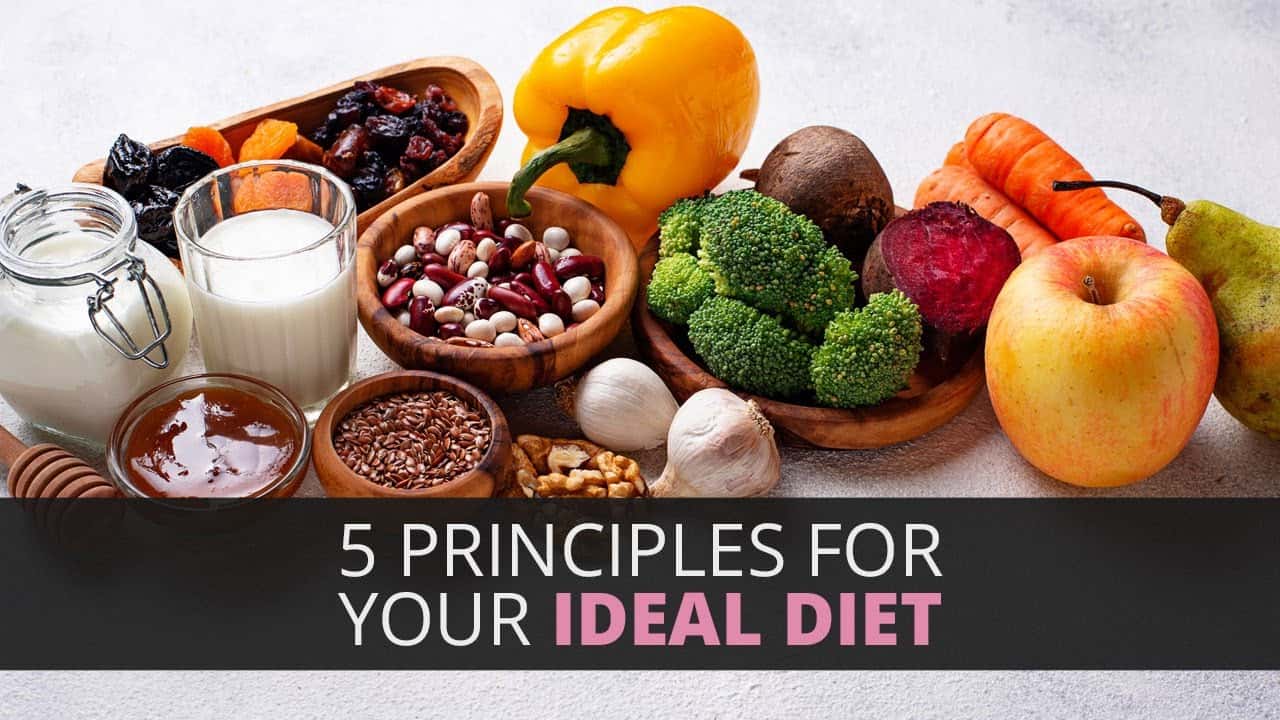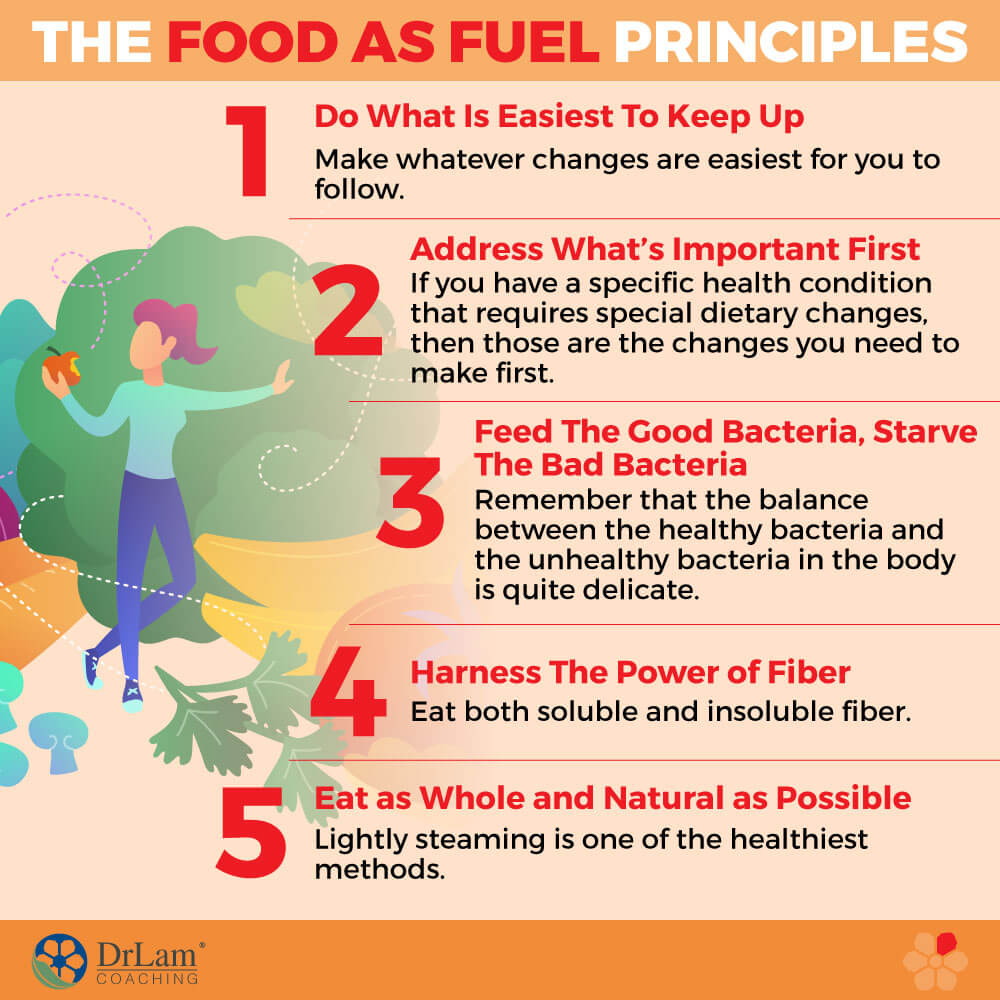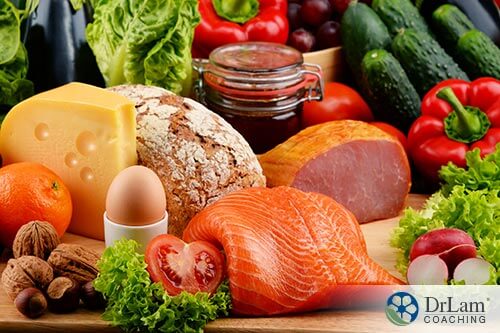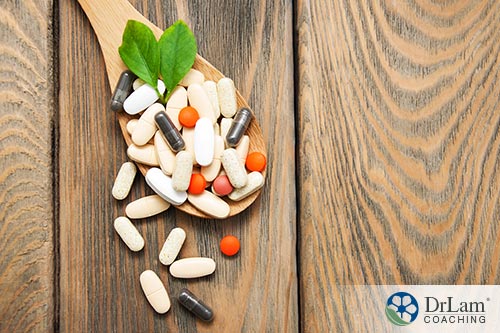
 More and more, the mainstream medical community is catching onto the importance of diet in disease prevention and therapy. We need to use food as fuel. Although there is still a long way to go, and most medical training involves very little exposure to nutritional science, the studies being conducted around the world nowadays are pointing back to one of the greatest cornerstones of health, which was already understood by the father of medicine himself, Hippocrates:
More and more, the mainstream medical community is catching onto the importance of diet in disease prevention and therapy. We need to use food as fuel. Although there is still a long way to go, and most medical training involves very little exposure to nutritional science, the studies being conducted around the world nowadays are pointing back to one of the greatest cornerstones of health, which was already understood by the father of medicine himself, Hippocrates:
“Let food be thy medicine and medicine be thy food.”
Using food as fuel and as medicine can be one of the best decisions you make for yourself and for your loved ones. Instead of over-medicating, or giving up on health and vitality altogether, you can slowly get into the habit of eating right, and teach this life-changing habit to your family and friends as well.
Diet is one of the most important components of adrenal fatigue recovery and the balancing of the NeuroEndoMetabolic (NEM) Stress Response. Without eating a healthy and nutritious diet at the right time and frequency, your adrenal glands will have a much harder time getting back their strength after having become dysregulated from chronic stress.
Not only that, but the fact is that eating a bad diet, such as the Standard American Diet, for a long period of time is actually a form of chronic stress on the body. It creates leaks in the intestinal lining, which then cause a state of inflammation in the gut, which can then spread to other areas of the body. This is a big stressor on your body, and so the NEM has to respond accordingly, and the adrenal glands are the part of the NEM.
The adrenal glands secrete the anti-stress hormone, cortisol, as well as other hormones, to try and neutralize the inflammation and to suppress the immune system that is now attacking all the unwanted substances coming into the bloodstream from the leaks in the gut.
At some point, the adrenal glands dysregulate, and their cortisol output drops. This is when you start to experience the symptoms of Adrenal Fatigue Syndrome (AFS), such as fatigue, weight issues, sleep problems, mood disturbances, lowered immunity, food and drug sensitivities, hair loss, brain fog, low libido, infertility, PMS, and heart palpitations, among others.
And when the adrenal glands are exhausted, the rest of the NEM is affected as well. Other than its hormonal circuit, of which the adrenal glands are part, the metabolic, cardionomic, neuroaffect, inflammation, and detoxification circuits also begin to weaken as they try to compensate for the loss of cortisol.
But just as bad diets can create this chaos, healthy diets can reverse it. The adrenal fatigue diet is one of the best, and although nutrition is most useful when tailored to each individual’s condition and needs, there are some principles of using food as fuel that you can work with in order to start making some changes right now, whether you have AFS or not.
But the first step toward a healthy diet is to bust some old, yet enduring myths that have many people eating the wrong things.
There is no magic bullet when it comes to nutrition. Every few years, a new diet trend becomes all the rage and its proponents claim that it has supernatural abilities to cure obesity, chronic disease, improve brain function, and maybe even save the world.
Unfortunately, there are downsides to every fad, and it can sometimes take effort to undo the damage that these trends have done to people’s health and motivation to eat well.
If you think of food as fuel, then you’ll know that although there are some types of fuel that are cleaner and more efficient than others, it is not as clear-cut as that in many cases. Some diets that work well in the short-term for certain goals end up harming you in the long run, some diets are more expensive than others, and some diets are just so restrictive that no one can keep them up for long without a serious relapse.
So, before you cut out a macronutrient completely – whether it be carbs, fats, or protein, please know that your body needs all three in certain ratios, and they all work together to provide you with the energy and building blocks you need to function. In the long run, any diet that attempts to cut one of these out has a very high risk of failure, and its consequences to your health are not usually good.
Carbs, fats, and protein on their own are not bad; their sources and ratios are what matter. Aim to eat balanced meals and ditch the extremes.
 The word “diet” can be a little misleading, as many of us associate it with a period of restricted eating until a certain goal is reached without thinking of what lies beyond that point. Say you take up a diet in order to lose weight, and then you reach your ideal weight. Do you now go back to the way you were eating before, or do you stick with these difficult restrictions? Which sounds more odious to you?
The word “diet” can be a little misleading, as many of us associate it with a period of restricted eating until a certain goal is reached without thinking of what lies beyond that point. Say you take up a diet in order to lose weight, and then you reach your ideal weight. Do you now go back to the way you were eating before, or do you stick with these difficult restrictions? Which sounds more odious to you?
A diet is a lifetime affair. It’s not a temporary project, it is a lifestyle that you lean into and adopt for good. That’s why you shouldn’t follow a fad, or go into extremes, as they are not sustainable long-term, and once your willpower runs out you’ll be back to your unhealthy old habits with a vengeance.
Using food as fuel means making small, daily changes until your eating habits themselves change. Until clean and healthy food is second nature and your palate has been reprogrammed to always guide you in the healthy direction.
While there are many people with gluten and lactose intolerance, and while meat and sugar shouldn’t constitute the bulk of your food intake, they are not necessarily always bad for you.
If you suddenly cut everything out without knowing which foods you are actually sensitive to, you might end up losing motivation and giving up. Or worse yet, you might rely on highly processed alternatives for some of your old favorites that end up being less nutritious than their originals.
This doesn’t mean you shouldn’t check for food sensitivities, as eating foods you are sensitive to on a regular basis can create leaks in the gut and a state of dysbiosis (imbalance) in your gut’s microbiome.
What you can do is try an elimination diet for a while and figure out which foods really are your enemy, and cut those out. How it works is that you first eliminate all the foods that you suspect you are sensitive to, then reintroduce each one back into your diet, waiting at least four days before moving onto the next one.
During those four or more days, you monitor your physical, mental, and emotional state for any negative reactions. The foods that affect you negatively are those you are sensitive to and should avoid. You can get tested for food allergies as well, if you want to double check.
 This is the opposite of the “cut everything out” obsession, yet just as restrictive. While there are some foods out there we can call superfoods, you are under no obligation to stuff yourself with them every single day.
This is the opposite of the “cut everything out” obsession, yet just as restrictive. While there are some foods out there we can call superfoods, you are under no obligation to stuff yourself with them every single day.
First of all, it’s not very pleasing to your taste buds, and secondly, it’s not even that good for your health. Even a powerhouse like kale isn’t enough to meet all your nutritional needs, so you should try to work on getting a variety of different fruits, vegetables, nuts, seeds, legumes, and even animal proteins each day.
To use food as fuel efficiently, you want to ensure the engine is running smoothly. This engine, your gut and your gut’s microbiome, thrives on a range of different sources of nutrition. So, eat the rainbow, but without overcomplicating things, because the most important aspect in eating right and using food as fuel in the best way is following these five principles, which we’ll discuss now.
Once you know the fad diet myths to avoid, you can adjust your focus towards developing a diet that works for you. These principles can guide you in figuring out how to use food as fuel for life and developing a healthy diet that feels good for your body and that you can keep up for the long haul.

It is true that you get the most nutrition if you:

However, it is also impossible.
Although this would make the nutrition police happy, most of us don’t have the time or energy to tick all of these boxes on a daily basis, or the money to hire a full-time cook who will.
So, the first principle of using food as fuel and medicine is to make whatever changes are the easiest for you to keep up. If that involves buying organic and seasonal but cooking in batches, then that’s what is good for you. Or if you love cooking every meal but want to use frozen or canned veggies so you don’t spend hours in the kitchen, then that’s what’s best for you.
If you have AFS, you’ll want to follow the adrenal fatigue diet as much as possible, and although it is quite a change from a Standard American Diet, you can make these changes gradually so you don’t overwhelm yourself.
The rules of thumb for using food as fuel for adrenal fatigue recovery are:
The second principle of using food as fuel is: if you have a specific health condition that requires special dietary changes, then those are the changes you need to make first. For example, if you are gluten intolerant, cutting out gluten is more important than focusing on weight loss. Even if you end up eating gluten-free products that are not the healthiest, this is still an improvement.
If you have AFS, one of the most important first steps is to ensure you have frequent and regular meal times. That means eating soon after waking up, always before 10 a.m., and eating every three to four hours. Optimally, your breakfast should be between 6:00 to 8:00 a.m., a snack at 10:00 a.m., lunch at 12:00 p.m., a snack at 3:00 p.m., dinner between 5:00 to 6:00 p.m., then a small snack (such as nuts) before bed.
This helps regulate your blood sugar levels and gives you the energy needed to recover. The adrenal fatigue diet is using food as fuel in the most basic way. It is keeping a steady stream of fuel in your body so that your adrenals don’t sense any kind of stress from irregular blood sugar levels or periods of hunger.
Once you have addressed the most important thing first, and it has become a habit for you, you can follow the next principle and take on another change.
Nine out of 10 of the cells of your body are non-human. They are mostly the cells of bacteria and viruses that live and work with the rest of your body. In a healthy individual, these different cells are in harmony, and your body acts as a good host while it receives the benefits these microbes give.
But it’s good to remember that the balance between the healthy bacteria and the unhealthy bacteria in the body is quite delicate. One of the main jobs of healthy bacteria is to keep the unhealthy bacteria in check so they don’t spread and cause the host – you – harm.
Your gut is where a large population of these microbes lives. These microbes actually help you digest and absorb your food, and protect you from invaders. But what happens when you eat certain types of food is that this microbiome in the gut gets negatively affected.
 Excess sugar, for example, feeds the bad bacteria and they begin to grow beyond controllable numbers. This puts your microbiome out of balance and increases your risk for problems such as candida, leaky gut syndrome, inflammation, and even depression. Alcohol, drugs, antibiotics, chemicals, toxins, and unhealthy fats can also weaken the good bacteria. This emboldens the bad bacteria to take over.
Excess sugar, for example, feeds the bad bacteria and they begin to grow beyond controllable numbers. This puts your microbiome out of balance and increases your risk for problems such as candida, leaky gut syndrome, inflammation, and even depression. Alcohol, drugs, antibiotics, chemicals, toxins, and unhealthy fats can also weaken the good bacteria. This emboldens the bad bacteria to take over.
Although your gut and microbiome are quite sturdy, over time, if they are not taken care of, there will be dysbiosis and imbalance, and this is one of the major causes of inflammation and consequently leads to other chronic inflammatory conditions.
And, as we’ve mentioned, AFS and the dysregulation of the NEM stress response can be a direct result of dysbiosis and inflammation in the gut. That is why the adrenal fatigue diet is anti-inflammatory and is very supportive of the microbiome. But, whether you have AFS or not, from now on, try to take into consideration your microbiome when you plan your meals. Use food as fuel not just for you, but also for your guests! Be a good host.
Most Americans eat a low-fiber diet. There is virtually no condition that a low-fiber diet is good for and so it makes absolutely no sense to neglect your fiber intake. If you eat a western diet, you need to increase the amount of fiber you eat, especially resistant fiber.
One you understand the benefits of a high-fiber diet, you won’t need much more motivation. Getting enough fiber:
You want to eat both soluble fiber and insoluble fiber. Soluble fiber helps retain water and softens the stools. Sources of soluble fiber include beans, nuts, seeds, peas, lentils, and oat bran, as well as certain fruits and vegetables.
Insoluble fiber helps bulk up stools and makes the food pass more smoothly and quickly through the digestive tract, which can help keep the pipes clean. Some types of food, such as animal protein, can begin to rot in the digestive tract, so they need to move along faster. Eating them alongside foods that contain insoluble fiber is a good solution. Sources of insoluble fiber include wheat bran, whole grains, and vegetables.
Some people with advanced AFS experience constipation, as their systems are running a little slower due to the need to conserve energy and the fatigue that permeates the entire body. And as the food passes more slowly through the weakened system, toxins and metabolic by-products build up. This can overload the NEM’s detoxification response, which can add to inflammation even more.
So it is imperative that if you have AFS, you do your best to avoid chronic constipation. Following the adrenal fatigue diet can help a lot with that.
 The last principle of using food as fuel is to eat as whole and natural as possible. This means eating grains, fruits, and vegetables in their whole form, and organic whenever you can. Eggs should come from free-range chickens, dairy products should be mostly raw, beef should be grass-fed, and cooking methods should use as little oil as possible. Lightly steaming is one of the healthiest ways to cook your vegetables.
The last principle of using food as fuel is to eat as whole and natural as possible. This means eating grains, fruits, and vegetables in their whole form, and organic whenever you can. Eggs should come from free-range chickens, dairy products should be mostly raw, beef should be grass-fed, and cooking methods should use as little oil as possible. Lightly steaming is one of the healthiest ways to cook your vegetables.
Processed foods, especially highly-processed carbohydrates like white bread, refined pasta, sweets, white sugar, and white rice, should be avoided as much as possible.
This may seem excessive at first, but it’s not an all-or-nothing principle. The more whole, organic, and natural you eat, the better. So if at the moment you rarely eat whole and organic, start by replacing one of the foods you eat most frequently with its whole and organic form – for example, switch from white rice to brown rice.
This one simple change will have a huge impact on your health. Your digestion will improve, your blood sugar levels will be more stable, your gut’s microbiome will balance, and you will feel fuller for longer.
Just keep in mind that it usually takes about a month or so for most people to adjust their taste buds. So, be patient, keep at it, and make one change at a time. And if you’re worried about the expenses, there are two things to consider:
With adrenal fatigue, the quality of the food you eat is very important for recovery. If your body has to process bad foods and detoxify your system constantly from herbicides, pesticides, excess sugar, antibiotics, hormones, and other unnatural additives, this adds stress to your body. One of the goals of the adrenal fatigue diet is to relieve your adrenal glands from this stress, and then support them with the nutrients and energy they need.
 You might now be wondering about how supplements fit in with this kind of eating plan. When you use food as fuel, supplements can help fill nutritional holes in your diet, or they can be taken in therapeutic doses as an extra boost to help overcome a certain condition.
You might now be wondering about how supplements fit in with this kind of eating plan. When you use food as fuel, supplements can help fill nutritional holes in your diet, or they can be taken in therapeutic doses as an extra boost to help overcome a certain condition.
But, ideally, in the long-term, if you eat a well-rounded diet that suits your individual requirements, your need for many different supplements will decrease, and you may end up only needing a multivitamin and one or two other supplements.
If all of this seems a little overwhelming, just take it slowly, and apply one principle at a time. Get support from a nutritionist when you need it. The rewards you will reap later on will be worth every effort you make and every penny you invest.
With so many fad diets coming in and out of style, it can be confusing to know what works. In this article, we’ll list some of the biggest myths of healthy eating and lay out the universal principles of using food as fuel so you know where to start.